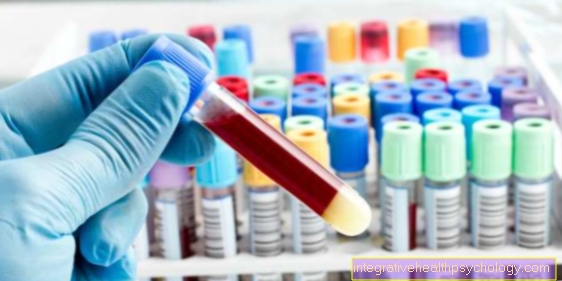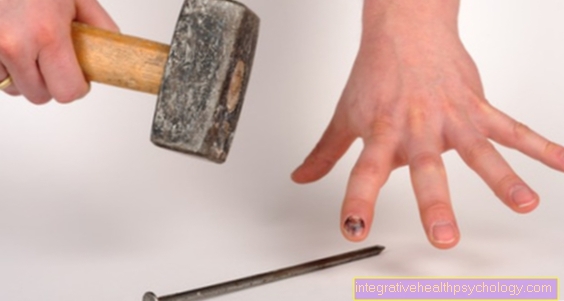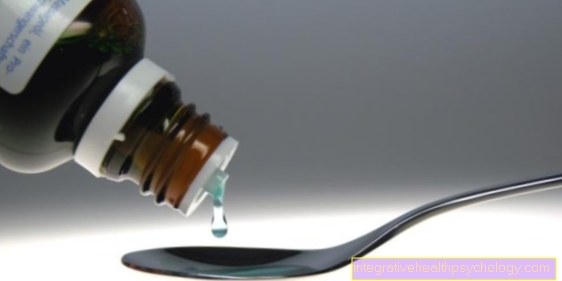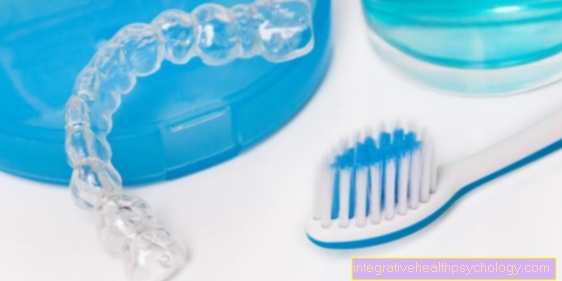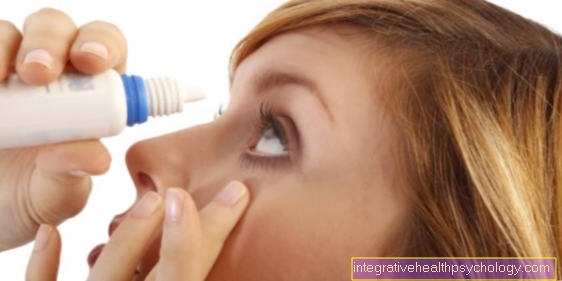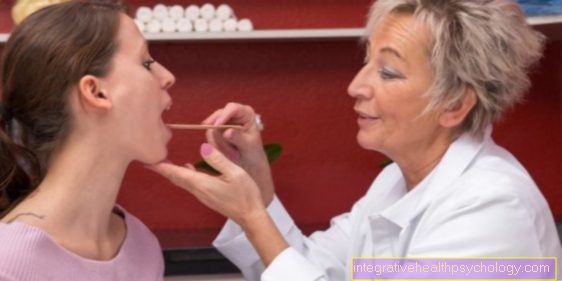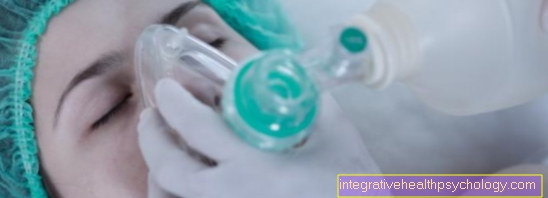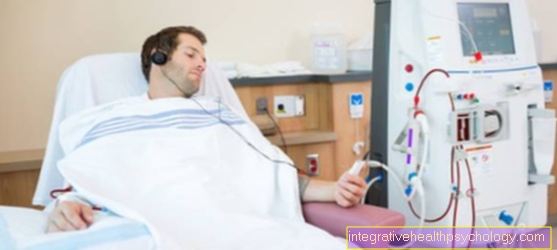Impetigo contagiosa
definition
Impetigo Contagiosa is a bacterial skin disease.
The cause can be infection with staphylococcus aureus on the one hand, and infection with streptococci on the other.
The main symptoms of impetigo contagiosa are oozing skin changes with crust and blistering. Here, the infection with staphylococci is described as rather large-bubble, the form with streptococci as a small-bubble form.
Most of the time, the blisters on the skin burst very quickly, so that the wounds have a smooth border. Impetigo contagiosa occurs more frequently in childhood. The disease is highly contagious, which is why strict hygiene must be observed.
You might also be interested in: Rash with pustules

Cause of impetigo contagiosa
Impetigo Contagiosa can be caused by two pathogens.
Impetigo Contagiosa Vulgaris is triggered by streptococci, which Impetigo Contagiosa Bullosum by the bacterium Staphylococcus aureus.
While the Impetigo Contagiosa Vulgaris is rather small-bubble, Impetigo Contagiosa Bullosum is rather large-bubble. However, both diseases show the same symptoms. In addition to the skin symptoms, general malaise and fever can also occur. If you experience symptoms, you should consult a pediatrician or a dermatologist.
Read more on the topic: Rash in children - what's behind it?
Diagnosis of impetigo contagiosa
The diagnosis can usually be made by eye diagnosis by an experienced pediatrician or dermatologist.
If this is not the case, a smear can be taken from the vesicles to detect the pathogen.
Most of the time, however, the symptoms are so impressive that a smear is not necessary. The main symptom that indicates impetigo contagiosa is a honey-yellow crust.
The editors also recommend: Blistering rash
Does Impetigo Contagiosa have to be reported?
Impetigo Contagiosa must be reported. Since the streptococci are the most common impetigo contagiosa pathogens, the risk of infection is very high.
If a child in the KiTa or school develops impetigo contagiosa due to streptococci, this must be reported to the management of the respective facility. As the disease is likely to be transmitted, attention should be paid to symptoms in the other children / staff at the facility. In addition to impetigo contagiosa, streptococci can lead to tonsillitis and erysipelas.
Furthermore, the pathogens can cause a number of secondary diseases that have become very rare due to the good antibiotic supply.
These include rheumatic fever, which can lead to valve defects in the heart, and glomerulonephritis, which can lead to functional impairment of the kidneys. If streptococci get into the bloodstream, they can cause blood poisoning (sepsis)
Concomitant symptoms
Impetigo Contagiosa presents with skin symptoms.
These are mostly located on the face. There are blisters on the skin that ooze and crust. Because the blisters usually burst immediately, a smooth-edged wound with crust formation and pus can be seen.
The crust formation is described as honey yellow and is considered a clinical sign of impetigo contagiosa. If the disease is severe, it can also lead to fever and fatigue. Impetigo contagiosa can be associated with severe symptoms and should definitely be treated by a doctor.
If the disease is not treated, secondary diseases may occur.
Therapy of impetigo contagiosa
The therapy is almost always done with antibiotics.
Since impetigo contagiosa is very contagious, contact with other children should be avoided during the period of the disease. An antibiotic ointment (fusidic acid) can be prescribed locally. If there is also a fever or fatigue, antibiotic therapy for swallowing should be prescribed.
For this clinical picture, cephalosporins of the 1st generation are best suited.Antibiotic treatment usually takes about 7 days. It is important to wash all textiles at 60 degrees and to dispose of creams that are used several times.
This is the only way to prevent reinfection. Family members should also be examined for signs of infection. After the infection has healed, the affected skin areas can be expected to heal without scars.
Cream - a therapy option for impetigo contagiosa
An antiseptic and an antibiotic are available for local use. Impetigo contagiosa should be treated with antibiotics, especially in children, in order to prevent secondary diseases such as rheumatic fever or glomerulonephritis.
Local antibiotic therapy is done with fusidic acid. This is applied directly to the skin in the form of a cream.
It can also be treated with antiseptics. Chlorhexidine is recommended for this, which is dabbed on the affected areas.
It is important to maintain strict hygiene in any type of treatment. All duvet covers, items of clothing or cuddly toys that have come into contact with the skin should be washed at at least 60 degrees. In addition, creams that are used several times should be thrown away, as pathogens can persist and lead to reinfection.
Using Home Remedies to Treat Impetigo Contagiosa ?!
Home remedies for impetigo contagiosa are not recommended.
A pediatrician / dermatologist should always be consulted if typical symptoms occur.
Impetigo contagiosa is transmitted by streptococci or staphylococci, which can lead to dangerous secondary diseases. The doctor should therefore decide whether initiation of antibiotic therapy is necessary.
Duration of treatment for impetigo contagiosa
Antibiotic therapy is usually scheduled for 7 days. After that, the skin symptoms should subside. Since the lesions are open wounds, it may take a little longer than 7 days to heal, but the wounds are no longer contagious.
Peculiarity in adults
Impetigo contagiosa can also occur in adults. Adults usually get infected from infected children.
Skin symptoms can also occur in adults, but these are usually not as extreme as in children.
In adults, the same therapy is used as in children with an antibiotic.
In addition, a smear can be taken, as infection with Staphylococcus aureus is also common in adults.
It is especially important for adults to dispose of all cosmetics that are used several times.
The persistence of the pathogen can often lead to reinfections. General symptoms in adults must also be treated with an oral antibiotic. It is important that adults avoid dealing with other people, especially children, as much as possible in order to avoid transmission.
Here too, strict hygiene should be observed and all laundry should be washed at 60 degrees. There are detergents that can also be used in the event of bacterial or fungal contamination of textiles. However, these should only be used if there is really a need. Otherwise, these detergents are extremely harmful to the environment and should not be used any further.
Read more on the topic: Skin changes on the face

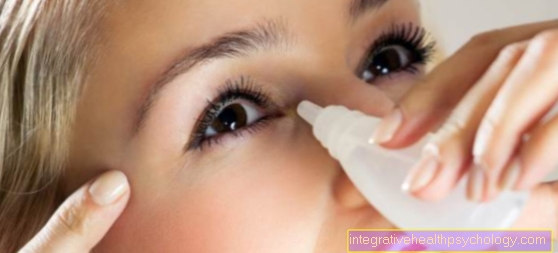



.jpg)
.jpg)





